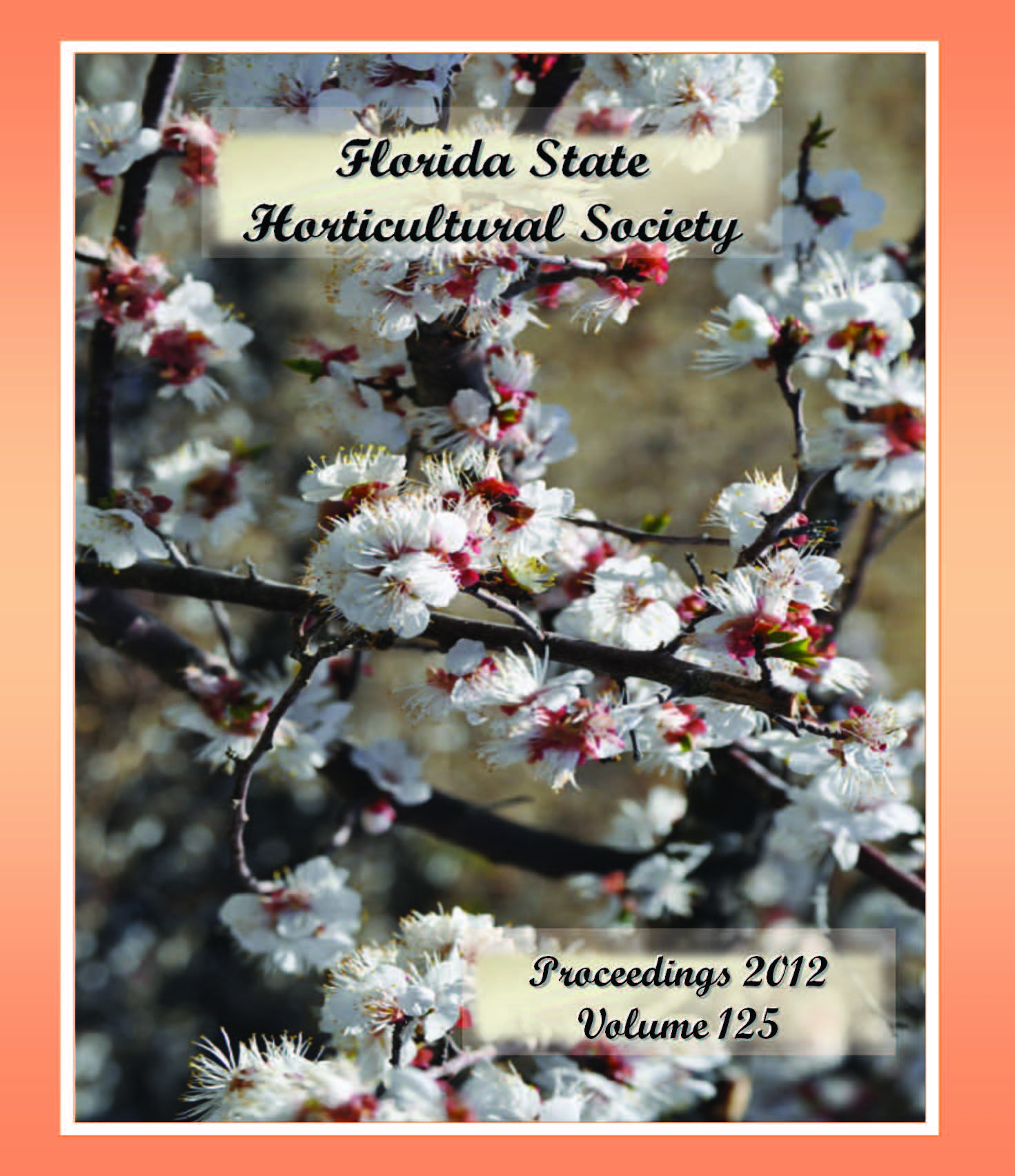Influence of Soil-applied Fertilizer on Greening Development in New Growth Flushes of Sweet Orange
Abstract
This study was conducted to determine if soil applied fertilizer can affect movement of Candidatus liberibacter asiaticus into new growth flushes of citrus in the absence of its primary vector, the Asian Citrus Psyllid. A 2 cultivar × 2 Liberibacter × 2 fertilizer experiment was conducted in an enclosed greenhouse. Liberibacter was introduced by grafting two infected buds on each tree in Aug. 2010. In Oct. 2010, the fertilizer was terminated on one-half of the trees. Two growth flushes occurred in March/April and May/June and leaves from each flush were removed for sampling. Plants were assayed for Liberibacter by RT-PCR and Cycle threshold (Ct) values obtained between 32 and 36 were removed from the study since in this range it is unclear if they are infected. Of the remaining plants, new growth flushes of infected trees had infection rates ranging from 64% to 100%. Uninoculated trees had 0% infection rate. The infection rate tended to be higher for ‘Valencia’ than ‘Hamlin’ and was not affected by fertilizer treatment. Incidence of the disease symptoms leaf mottling, Zn island greening, veinal chlorosis, and vein corking were much higher on trees that did not receive fertilizer. HLB and fertilization affected foliar levels of P, Ca, Mg, Zn, and Fe. Widespread symptoms consistent with phytophthora root rot developed in this study and may have created routes for Liberibacter to move into phloem of new growth flushes.

